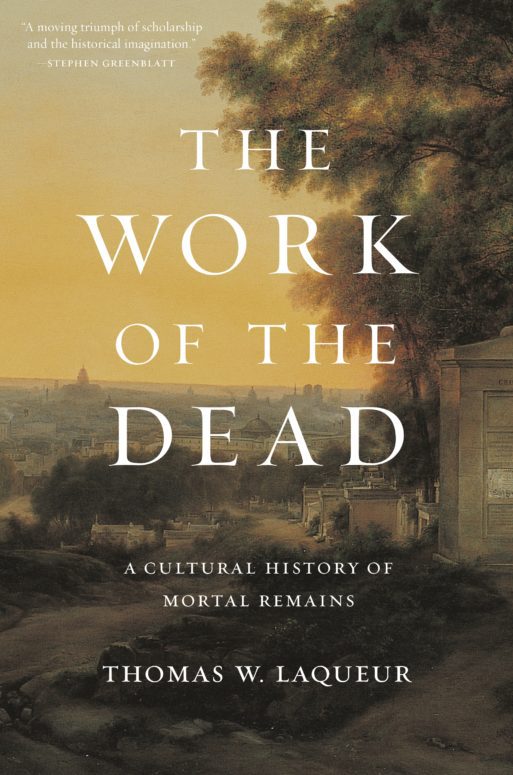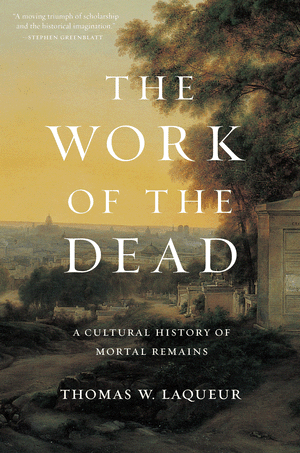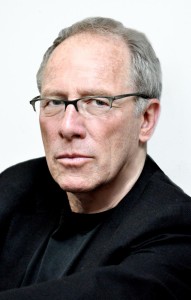 Significant amounts of research have been invested in understanding the grieving rituals of the animal kingdom, but literature examining the role that the human corpse plays in how culture is created and sustained over time has been relatively sparse. That is, until Thomas W. Laqueur published “The Work of the Dead” this year. Laqueur utilizes source texts primarily from 18th t0 20th century Western Europe to trace corpse-oriented social behaviors in medical tracts, letters, poems, mortuary records, paintings and songs. This 736-page tome places the Greek philosopher Diogenes at the center of its inquiry, continuously revisiting his assertion that, when he dies, his body should be thrown over the city walls to be devoured by wild animals, because he will no longer be sensate, nor have any more use for his physical form. While this argument seems logical enough, it has been universally rejected throughout history. Noting that humans have been caring for their dead since about 10,000 B.C., Laqueur investigates why.
Significant amounts of research have been invested in understanding the grieving rituals of the animal kingdom, but literature examining the role that the human corpse plays in how culture is created and sustained over time has been relatively sparse. That is, until Thomas W. Laqueur published “The Work of the Dead” this year. Laqueur utilizes source texts primarily from 18th t0 20th century Western Europe to trace corpse-oriented social behaviors in medical tracts, letters, poems, mortuary records, paintings and songs. This 736-page tome places the Greek philosopher Diogenes at the center of its inquiry, continuously revisiting his assertion that, when he dies, his body should be thrown over the city walls to be devoured by wild animals, because he will no longer be sensate, nor have any more use for his physical form. While this argument seems logical enough, it has been universally rejected throughout history. Noting that humans have been caring for their dead since about 10,000 B.C., Laqueur investigates why.
 Laqueur convincingly asserts that since the Medieval Age, the role of the corpse in forming living communities was influenced largely by the role that Christianity played in making and sustaining culture. From Medieval times through to the Protestant Reformation in the 18th century, laypeople were generally buried in the churchyard of the parish where they lived. Churchyards were lumpy, constantly shifting places, which seldom included personalized memorials above and beyond the format of “Here lies the body of ____.” Bodies were buried on top of each other and bones sometimes had to be excavated and placed in church catacombs to make space for the inevitable decomposition of newer remains. These physical sites buttressed communities of individuals united with a common philosophy and worldview that included a belief in physical resurrection.
Laqueur convincingly asserts that since the Medieval Age, the role of the corpse in forming living communities was influenced largely by the role that Christianity played in making and sustaining culture. From Medieval times through to the Protestant Reformation in the 18th century, laypeople were generally buried in the churchyard of the parish where they lived. Churchyards were lumpy, constantly shifting places, which seldom included personalized memorials above and beyond the format of “Here lies the body of ____.” Bodies were buried on top of each other and bones sometimes had to be excavated and placed in church catacombs to make space for the inevitable decomposition of newer remains. These physical sites buttressed communities of individuals united with a common philosophy and worldview that included a belief in physical resurrection.
During the Protestant Reformation the relics of saints, martyrs and others so-called literally took the impact of the new-again assertion that the body is a mere vessel, and that to place undue attention upon it after death is folly. Relics were destroyed, proven to be false, and paraded around the streets in mockery. This echoing of Diogenes served to contradict the Catholic Church’s monopoly on spirituality and the economy of Western Europe.

Thomas W. Laqueur
(Credit: history.berkeley.edu)
The first great cemetery in Europe was the still-notable Père-Lachaise in Paris, built under the direction of Napoleon. The cemetery developed as a pan-spiritual and secular place of commemoration where individuals could be memorialized, supposedly for the ongoing benefit of the living. Because they were not specifically related to any one specific faith-based community, they became a cultural site in which the cult of individuality and celebrity took hold, reinforced by the Industrial Revolution and its attending values of bigger, better, and stronger. As wealth became accessible to a layperson through innovation and hard work (as well as a healthy dose of pre-existing social privilege), cemeteries reflected this shift toward individual commemoration, mimicking the traditions reserved in the past for royalty and the elite.
Laqueur’s venerable research all leads to one principal concluding thought, which is that while we can know logically that the human corpse is unrelated to the personality it once held, it is the most intimately connected material thing that is left of a life. For this reason, how we care for the body reflects the way we have cared for the personality, and how the relationships created by that personality continue to ripple its influence into the world of the living.

 ”The Work of the Dead” by Thomas W. Laqueur
”The Work of the Dead” by Thomas W. Laqueur


 Recovering Cremation Remains After the Los Angeles Fires
Recovering Cremation Remains After the Los Angeles Fires
 “As Tears Go By” by Marianne Faithfull
“As Tears Go By” by Marianne Faithfull
















